Text types: Texts for social interaction
| Overview |
When two or more people are together they almost always
speak to each other, ie they interact with each
other socially. ![]()
When we interact socially, we use language to exchange
meanings about:
|
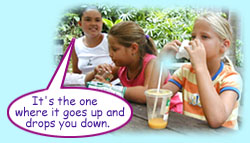 |
||||||
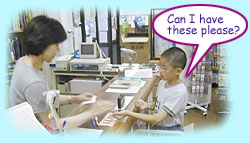 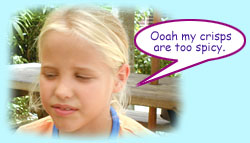
|
|||||||
When people use spoken language to interact socially in this way, each person takes a turn at speaking and the speakers build a text together. This type of text is called a dialogue or a spoken interaction.
Here is an extract from a conversation between three children. As each child takes a turn, the text unfolds into a conversation. The turns keep the conversation going:
How long are social interactions?
Sometimes a social interaction is very short. For example, a text
for social interaction might be any of the following:
|
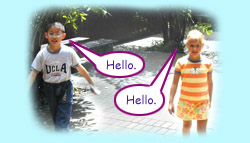
|
||||||
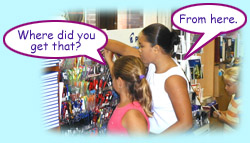 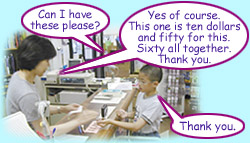
|
|||||||
At other times a text for social interaction can be quite long. For example, when we meet our friends for a chat, or if we are negotiating the price of an expensive item, the conversation or negotiation may continue for some time.
We use texts for social interaction to:
|
|
exchange information, eg when we ask where something is |
| exchange goods and services, eg when we buy things in a shop | |
|
|
build social relationships, eg when we have a conversation with our friends |
|
|
learn from and with others, eg in a classroom at school |

|
We use texts for social interaction when we are with people at the same
place or when we use the telephone to speak to
people who are in a different place.
We also use texts for social interaction when we send emails and 'chat' to people on the computer. In this situation there is often a time delay in the exchange of responses. At school, students use texts for social interaction in the classroom and the playground when they speak to each other and the teacher. |
|
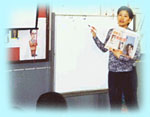
|
|
In these pages you will find answers to the following questions:
|
How are texts for social interaction structured? |
|
|
What are the typical grammatical features of texts for social interaction? |
|
|
How can I use texts for social interaction in the classroom? |
For examples of texts for
social interaction which have been analysed to illustrate their
structure and key grammatical features, click on the menu on the left. To give us feedback about this section, click here or on the Comment button at the top of the
screen. If you have any questions about this section, visit the Language Corner. If you have any questions or suggestions about how to teach this section, send a
message to the Teaching Corner.
![]()
![]()
![]()
![]()